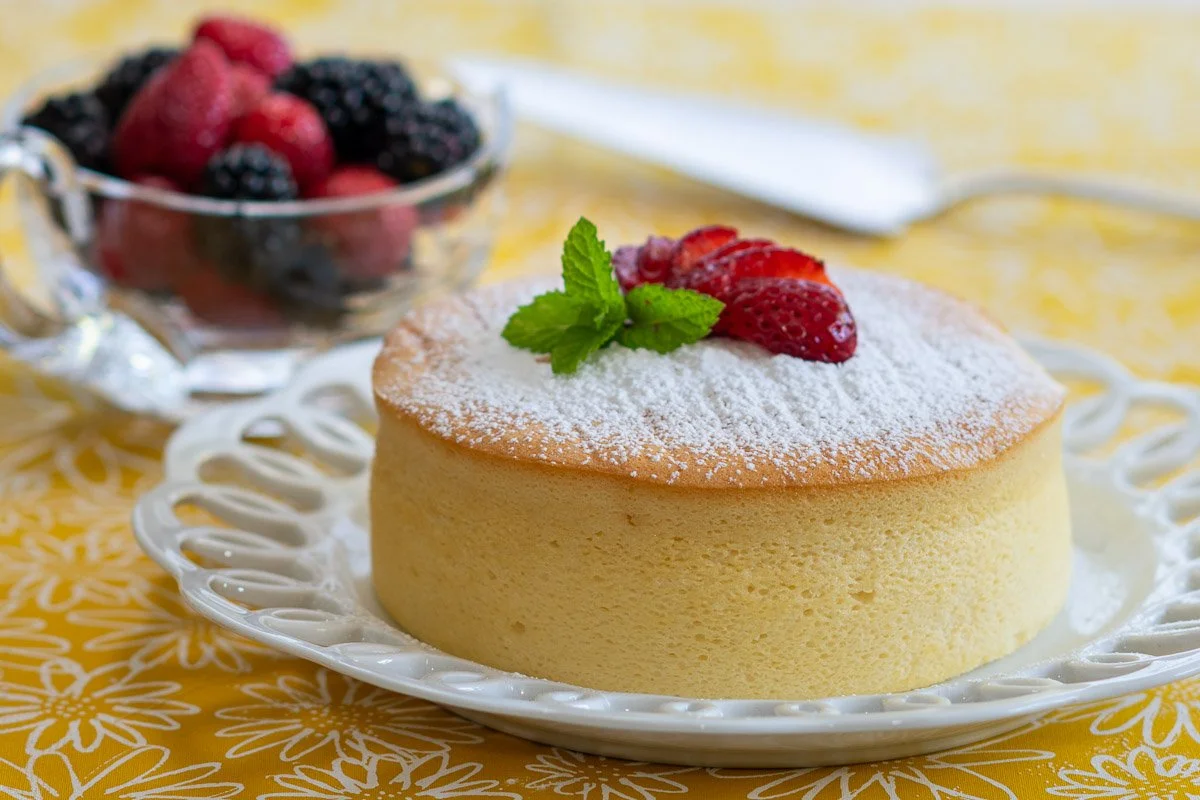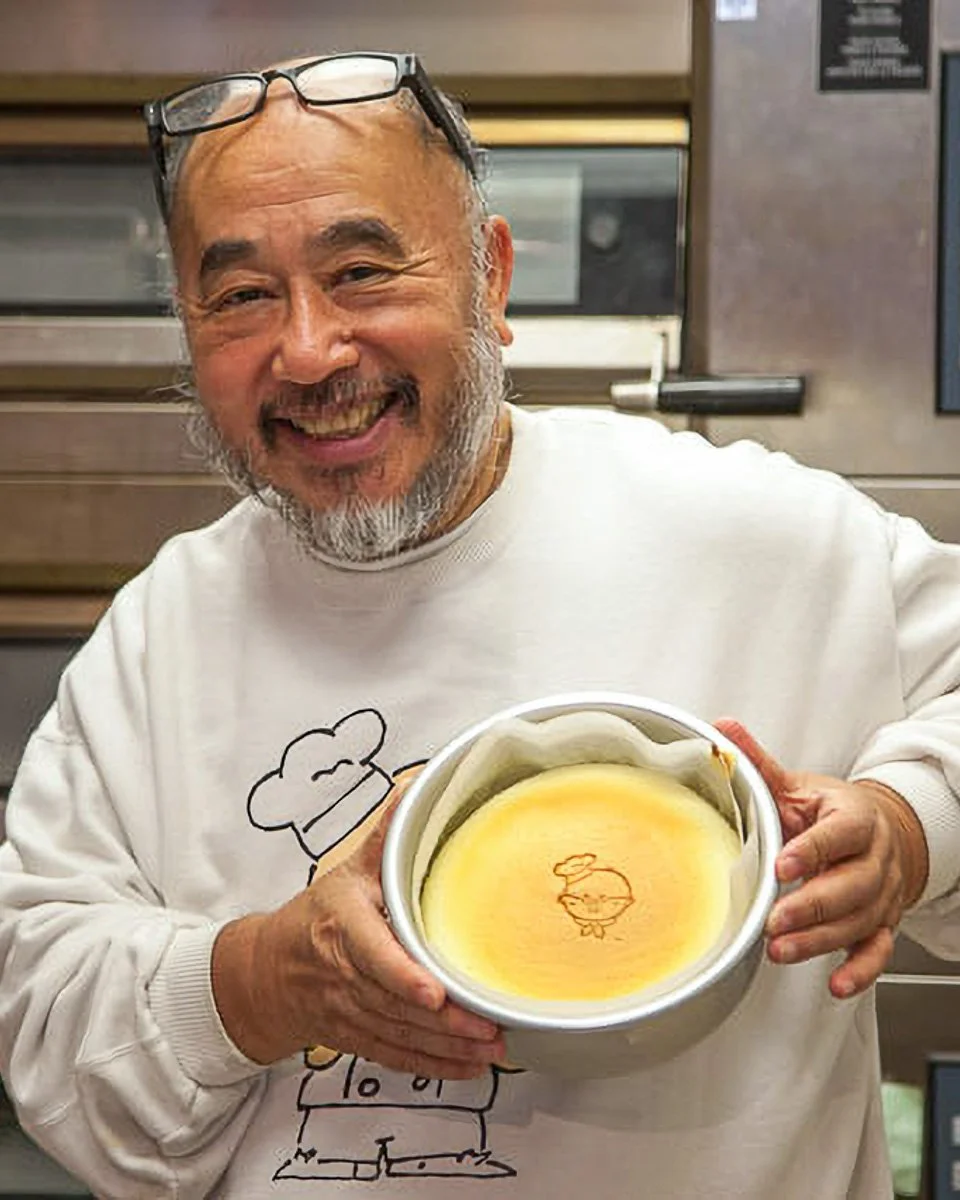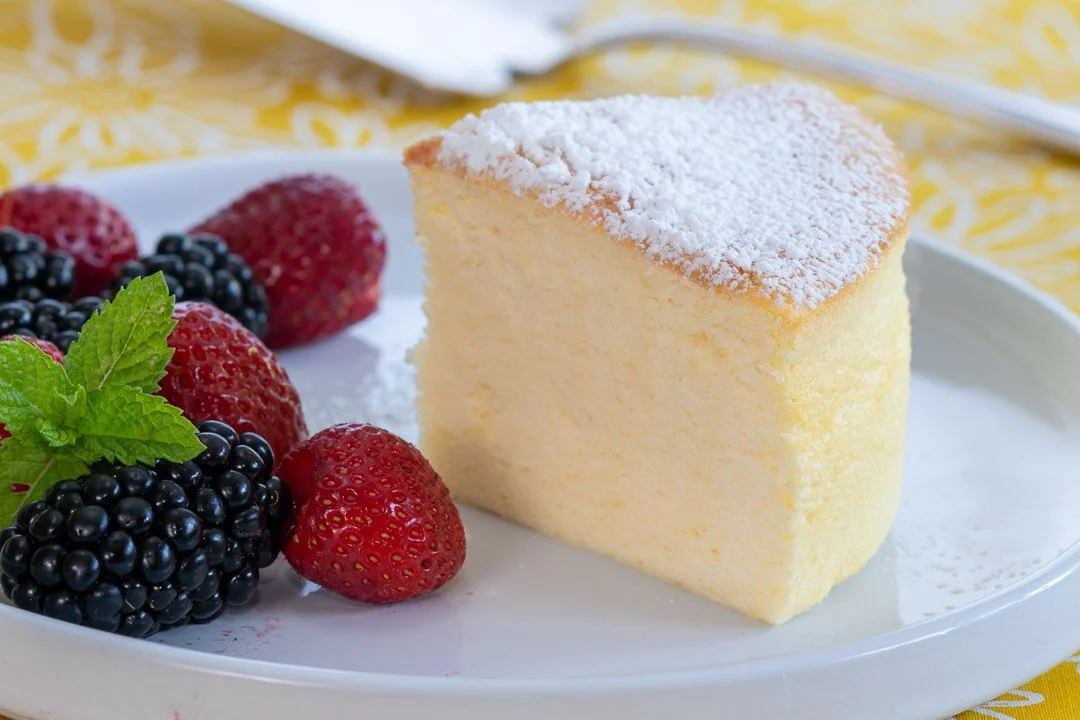How is it that I’d never heard of Japanese cheesecake until now? This jiggly, airy, cloudlike creation is so crushable—a shoo-in for the Cake Hall of Fame. Part cheesecake, part spongecake, part soufflé, it had me at the first fluffy bite.
A little online research confirms that I am late to this party. Uncle Tetsu’s Japanese Cheesecake, founded in Japan in mid 1980s, now counts more than 70 locations worldwide, including several in California. When the Shanghai store opened, lines were so long that management had to set a limit of one cake per person.
I still haven’t tasted Uncle Tetsu’s but the version I made from a YouTuber’s recipe was perfection. I’ll be enjoying it with summer fruit for the next few weeks and hope you’ll try it. If you’ve had the original, let me know how it compares.
Uncle Tetsu himself: Tetsushi Mizokami
What I most love about this cake is its delicate, pillowy texture. The recipe calls for cream cheese but not a lot, and sugar but not a lot. There’s no graham cracker crust. I added vanilla extract and a pinch of salt to the YouTuber’s recipe. (Her channel is Mai Cookbook.) It’s super easy, apart from two minor hurdles:
You probably do not own the right cake pan—a 6-inch by 2 1/2-inch round. I got one in two days from Amazon. If you want to make Japanese cheesecake in an 8-inch round pan, The New York Times has a recipe but I can’t vouch for it.
Also, Mai’s measurements are metric. I am providing the American equivalents but I used a scale and weighed my ingredients. If you don’t own a kitchen scale, this cake is a good reason to buy one.
Mai’s Japanese Cheesecake
Adapted from the YouTube channel Mai Cookbook. I like this cake best when it’s slightly warm. The texture is not as fluffy the next day, but I doubt you’ll have any left. Please use a natural cream cheese with no stabilizers (like xanthan gum or guar gum). Note that this cake bakes in a water bath so have your boiling water ready.
25 g (3 tablespoons) unbleached all-purpose flour
15 g (2 tablespoons) cornstarch
120 g (1/2 cup) natural cream cheese, at room temperature
30 g (2 tablespoons) unsalted butter, at room temperature
60 g (1/4 cup) sugar, divided into two 30 g (2 tablespoon) portions
3 large eggs, separated
1 teaspoon vanilla extract
Pinch sea salt
60 ml (1/4 cup) whole milk
¼ teaspoon cream of tartar
Preheat the oven to 200°C (390°F). Line the bottom of a 6- by 3-inch round cake pan with parchment. Butter the pan sides or coat with pan spray. Bring a kettle of water to a boil for a water bath.
Sift together the flour and cornstarch. In a stand mixer with the paddle, or with hand beaters, beat the cream cheese, butter and 30 g (2 tablespoons) sugar until smooth. Add the egg yolks one at a time, beating until smooth. Add the vanilla, salt and milk and beat well. Add the dry ingredients and beat until incorporated. Scrape the beaters and the sides of the bowl and blend again. If you see any lumps, beat until smooth with a hand whisk.
With an electric mixer or by hand, whisk the egg whites and cream of tartar until frothy. Add the remaining 30 g (2 tablespoons) sugar gradually and whisk to firm peaks. Gently fold the egg whites into the batter. Transfer to the prepared pan. Grasp the pan in both hands and tap firmly on a counter two or three times to eliminate any air pockets.
Set the cake pan inside a larger pan or baking dish and add boiling water to come halfway up the sides of the cake pan. Bake 15 minutes, then lower the oven temperature to 140°C (275°F) and bake 30 minutes longer. Turn off the oven and leave the cake in the oven with the door closed for another 30 minutes. Remove the cake from the oven and transfer the pan to a cake rack to cool for 30 minutes. Invert it, remove the parchment and set it on a cake plate right side up. Dust with powdered sugar and serve.
Serves 6



